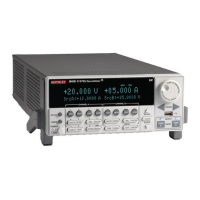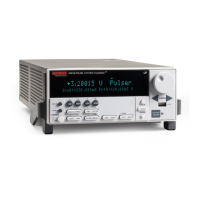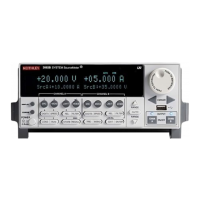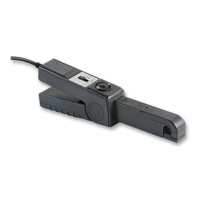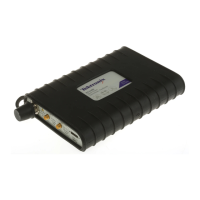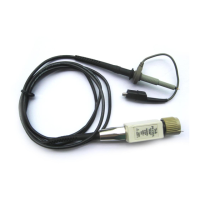13: Introduction to TSP commands 2470 High Voltage SourceMeter Instrument
13-2 2470-901-01 Rev. A / May 2019
Functions
Function-based commands control actions or activities. A function-based command performs an
immediate action on the instrument.
Each function consists of a function name followed by a set of parentheses ( ). You should only
include information in the parentheses if the function takes a parameter. If the function takes one or
more parameters, they are placed between the parentheses and separated by commas.
Example 1
delay(0.250)
Emit a double-beep at 2400 Hz. The
sequence is 0.5 s on, 0.25 s off, 0.5 s on.
Example 2
You can use the results of a function-based command directly or assign variables to the results for
later access. The following code defines x and prints it.
print(x)
100
Attributes
Attribute-based commands are commands that set the characteristics of an instrument feature or
operation. For example, a characteristic of TSP-enabled instruments is the model number
(localnode.model).
Attributes can be read-only, read-write, or write-only. They can be used as a parameter of a function
or assigned to another variable.
To set the characteristics, attribute-based commands define a value. For many attributes, the value is
in the form of a number, enumerated type, or a predefined constant.
Example 1: Set an attribute using a number
testData = buffer.make(500)
testData.capacity = 600
Use a function to create a buffer named
testData with a capacity of 500, then use
the bufferVar.capacity attribute to
change the capacity to 600.
Example 2: Set an attribute using an enumerated type
display.lightstate = display.STATE_LCD_75
This attribute controls the brightness of the
front-panel display and buttons. Setting this
attribute to display.STATE_LCD_75 sets
the brightness of the display and buttons to
75% of full brightness.
